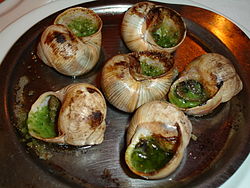List - Helicogena inflata Hartmann, 1844
- Helicogena pomatia (Linnaeus, 1758)
- Helicogena pomatia var. gesneri Hartmann, 1844
- Helicogena pomatia var. rustica Hartmann, 1844
- Helicogena pomatia var. sphaeralis Hartmann, 1844
- Helix (Helix) pomatia Linnaeus, 1758
- Helix eusarcosoma Servain, 1884
- Helix pomaria O. F. Müller, 1774
- Helix pomatia albida Moquin-Tandon, 1855
- Helix pomatia brunnea Moquin-Tandon, 1855
- Helix pomatia expansilabris Kobelt, 1906
- Helix pomatia parva Moquin-Tandon, 1855
- Helix pomatia quinquefasciata Moquin-Tandon, 1855
- Helix pomatia var. banatica Kimakowicz, 1890
- Helix pomatia var. claudiensis Kobelt, 1906
- Helix pomatia var. compacta Hazay, 1880
- Helix pomatia var. costellata Kobelt, 1906
- Helix pomatia var. dobrudschae Kobelt, 1906
- Helix pomatia var. elsae Kobelt, 1906
- Helix pomatia var. gratiosa Gredler, 1892
- Helix pomatia var. hajnaldiana Hazay, 1880
- Helix pomatia var. kapellae Kobelt, 1906
- Helix pomatia var. lagarinae Adami, 1885
- Helix pomatia var. lednicensis Brancsik, 1888
- Helix pomatia var. luteola Kobelt, 1906
- Helix pomatia var. pannonica Kobelt, 1906
- Helix pomatia var. pedemontana Kobelt, 1907
- Helix pomatia var. piceata Gredler, 1890
- Helix pomatia var. pulskyana Hazay, 1880
- Helix pomatia var. radiata Ulicny, 1885
- Helix pomatia var. sabulosa Hazay, 1880
- Helix pomatia var. serbica Kobelt, 1906
- Helix pomatia var. solitaria Hazay, 1880
- Helix pomatia var. transsylvanica Kobelt, 1906
- Helix promaeca Bourguignat, 1882
- Helix pyrgia Bourguignat, 1882
- Helix scalaris O. F. Müller, 1774
- Helix segalaunica Sayn, 1888
|
















